Posted on May 21st, 2021 by Mary Lord
 Students in grades 5 to 7 learn about how muscles work and follow the engineering design process to create their own biomedical device to aid in the recovery of a strained bicep. They discover the importance of rest to muscle recovery and that muscles (just like engineers!) work together to achieve a common goal.
Students in grades 5 to 7 learn about how muscles work and follow the engineering design process to create their own biomedical device to aid in the recovery of a strained bicep. They discover the importance of rest to muscle recovery and that muscles (just like engineers!) work together to achieve a common goal.
Image from NASA Jet Propulsion Lab
Read More
Filed under: Class Activities, Grades 6-8, Grades K-5, Lesson Plans | Comments Off on Build an Artificial Bicep
Tags: anatomy, biceps, biomechanical engineering, Biomedical Engineering, Class Activities, Grades 6-8, Grades K-5, Human Body, Lesson Plan, muscles
Posted on February 4th, 2021 by Mary Lord
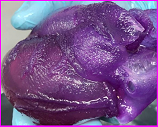 Biomedical and tissue engineers are harnessing the power of 3-D printing, engineered bioinks, and novel materials with the aim of one day fabricating replacement hearts and other body parts.
Biomedical and tissue engineers are harnessing the power of 3-D printing, engineered bioinks, and novel materials with the aim of one day fabricating replacement hearts and other body parts.
Read More
Filed under: Special Features | Comments Off on The Beat Goes On with 3-D Bioprinting
Tags: 3-D bioprinting, Adam Feinberg, Biomedical Engineering, Carnegie Mellon University, heart, regenerative medicine, replacement body parts, tissue engineering
Posted on February 4th, 2021 by Mary Lord
 Students in grades 6-8 use their knowledge about how healthy heart valves function to design, construct, and implant prototype replacement mitral valves for hypothetical patients’ hearts. In the process, they discover the pros and cons of different types of artificial heart valves based on materials, surgery requirements, and lifespan.
Students in grades 6-8 use their knowledge about how healthy heart valves function to design, construct, and implant prototype replacement mitral valves for hypothetical patients’ hearts. In the process, they discover the pros and cons of different types of artificial heart valves based on materials, surgery requirements, and lifespan.
Read More
Filed under: Class Activities, Grades 6-8, Lesson Plans | Comments Off on Saving a Life: Heart Valve Replacement
Tags: Biomedical Engineering, Class Activities, Grades 6-8, heart valve, human physiology, Lesson Plan, teachengineering
Posted on April 11th, 2020 by Mary Lord
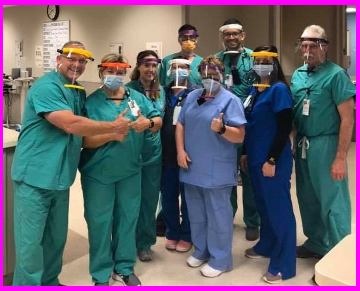 It seemed like a simple request. Lake Regional Hospital in Osage Beach, Mo., needed 150 face shields for those caring for coronavirus patients. Students at nearby Camdenton High School rushed to help – and soon began fielding requests from first responders and even U.S. troops in Afghanistan. Their supply source: 3-D printers the nearby middle school had received as part of a University of Missouri program to improve STEM education.
It seemed like a simple request. Lake Regional Hospital in Osage Beach, Mo., needed 150 face shields for those caring for coronavirus patients. Students at nearby Camdenton High School rushed to help – and soon began fielding requests from first responders and even U.S. troops in Afghanistan. Their supply source: 3-D printers the nearby middle school had received as part of a University of Missouri program to improve STEM education.
Read More
Filed under: K-12 Education News, K-12 Outreach Programs, Special Features | Comments Off on High School Students Engineer Covid-19 Gear
Tags: 3-D printing, Biomedical Engineering, coronavirus, Covid-19 protective gear, Curriculum, middle school technology integration, STEM education, University of Missouri College of Education eMINTS program
Posted on March 3rd, 2020 by Mary Lord
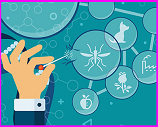 Rapid diagnostic tests for use in the field, protective gear for physicians, and genetically modified mosquitoes are among the ways engineering researchers are joining the global health effort to fight ebola and other emerging diseases.
Rapid diagnostic tests for use in the field, protective gear for physicians, and genetically modified mosquitoes are among the ways engineering researchers are joining the global health effort to fight ebola and other emerging diseases.
Read More
Filed under: Special Features | Comments Off on Engineers Tackle Ebola
Tags: Biomedical Engineering, CDC, disease diagnosis, ebola, genetically modified mosquitoes, Gottingen University, Harvard Wyss Institute, Intrexon, paper-based diagnostic test, suitcase lab, Zika
Posted on March 3rd, 2020 by Mary Lord
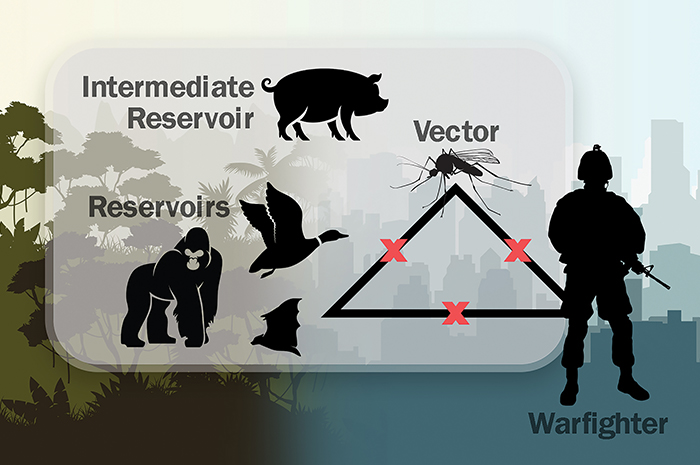 A Defense Department study recruits engineers and scientists in an effort to study animal-to-human disease transmission and prevent emerging epidemics.
A Defense Department study recruits engineers and scientists in an effort to study animal-to-human disease transmission and prevent emerging epidemics.
Read More
Filed under: Special Features | Comments Off on Preemptive Strike on Emerging Epidemics
Tags: animal to human diseases, ASEE Prism magazine, Biomedical Engineering, DARPA preventing Emerging Pathogenic Threats PREEMPT project, ebola, public health, vector, Zika
Posted on February 6th, 2020 by Mary Lord
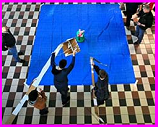 A classic engineering challenge involves designing and building devices that can deliver necessary goods to “Toxic Island,” an island that has been quarantined by the World Health Organization due to a nasty outbreak of disease. Working within specific constraints, including limited materials, middle school students follow the engineering design process to design, test, and improve a device that can deliver “medicine” and other vital supplies accurately and quickly without touching either the water or island.
A classic engineering challenge involves designing and building devices that can deliver necessary goods to “Toxic Island,” an island that has been quarantined by the World Health Organization due to a nasty outbreak of disease. Working within specific constraints, including limited materials, middle school students follow the engineering design process to design, test, and improve a device that can deliver “medicine” and other vital supplies accurately and quickly without touching either the water or island.
Read More
Filed under: Class Activities, Grades 9-12, Grades 9-12, Lesson Plans | Comments Off on Toxic Island: Design Devices to Deliver Goods
Tags: Biomedical Engineering, Class Activities, commerce, delivery, Design, engineering design challenge, Engineering Design Process, Grades 9-12, Lesson Plan, maker challenges, pandemic, public health
Posted on February 23rd, 2019 by Mary Lord
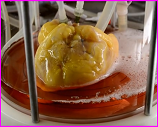 The human body is an engineering marvel, but ligaments snap and organs fail. What if replacement parts could be grown in the lab – or by patients themselves? That’s the exciting frontier of tissue engineering and regenerative medicine that biomedical engineers, scientists, and physicians are exploring, with tantalizing results.
The human body is an engineering marvel, but ligaments snap and organs fail. What if replacement parts could be grown in the lab – or by patients themselves? That’s the exciting frontier of tissue engineering and regenerative medicine that biomedical engineers, scientists, and physicians are exploring, with tantalizing results.
Read More
Filed under: Special Features | Comments Off on Engineering Spare Body Parts
Tags: ASEE Prism magazine, biomechanical engineering, Biomedical Engineering, bioprinting, bioreactors, heart, organ transplant, regenerative medicine, STEM cell research, tissue engineering
Posted on February 14th, 2019 by Mary Lord
 Students in grades 3 to 5 learn about their heart rate and different ways it can be measured by constructing and using a simple device to measure their heart rate under different circumstances, such as sitting, standing, and jumping. They make predictions and record data on a worksheet.
Students in grades 3 to 5 learn about their heart rate and different ways it can be measured by constructing and using a simple device to measure their heart rate under different circumstances, such as sitting, standing, and jumping. They make predictions and record data on a worksheet.
Read More
Filed under: Class Activities, Grades K-5, Lesson Plans | Comments Off on The Beat Goes On
Tags: Biomedical Engineering, Class Activities, Grades K-5, Health, heart, Lesson Plan, NGSS aligned, pulse, stethoscope, teachengineering
 Students in grades 5 to 7 learn about how muscles work and follow the engineering design process to create their own biomedical device to aid in the recovery of a strained bicep. They discover the importance of rest to muscle recovery and that muscles (just like engineers!) work together to achieve a common goal.
Students in grades 5 to 7 learn about how muscles work and follow the engineering design process to create their own biomedical device to aid in the recovery of a strained bicep. They discover the importance of rest to muscle recovery and that muscles (just like engineers!) work together to achieve a common goal.








 Biomedical and tissue engineers are harnessing the power of 3-D printing, engineered bioinks, and novel materials with the aim of one day fabricating replacement hearts and other body parts.
Biomedical and tissue engineers are harnessing the power of 3-D printing, engineered bioinks, and novel materials with the aim of one day fabricating replacement hearts and other body parts.  Students in grades 6-8 use their knowledge about how healthy heart valves function to design, construct, and implant prototype replacement mitral valves for hypothetical patients’ hearts. In the process, they discover the pros and cons of different types of artificial heart valves based on materials, surgery requirements, and lifespan.
Students in grades 6-8 use their knowledge about how healthy heart valves function to design, construct, and implant prototype replacement mitral valves for hypothetical patients’ hearts. In the process, they discover the pros and cons of different types of artificial heart valves based on materials, surgery requirements, and lifespan. It seemed like a simple request. Lake Regional Hospital in Osage Beach, Mo., needed 150 face shields for those caring for coronavirus patients. Students at nearby Camdenton High School rushed to help – and soon began fielding requests from first responders and even U.S. troops in Afghanistan. Their supply source: 3-D printers the nearby middle school had received as part of a University of Missouri program to improve STEM education.
It seemed like a simple request. Lake Regional Hospital in Osage Beach, Mo., needed 150 face shields for those caring for coronavirus patients. Students at nearby Camdenton High School rushed to help – and soon began fielding requests from first responders and even U.S. troops in Afghanistan. Their supply source: 3-D printers the nearby middle school had received as part of a University of Missouri program to improve STEM education.  Rapid diagnostic tests for use in the field, protective gear for physicians, and genetically modified mosquitoes are among the ways engineering researchers are joining the global health effort to fight ebola and other emerging diseases.
Rapid diagnostic tests for use in the field, protective gear for physicians, and genetically modified mosquitoes are among the ways engineering researchers are joining the global health effort to fight ebola and other emerging diseases. A Defense Department study recruits engineers and scientists in an effort to study animal-to-human disease transmission and prevent emerging epidemics.
A Defense Department study recruits engineers and scientists in an effort to study animal-to-human disease transmission and prevent emerging epidemics.  A classic engineering challenge involves designing and building devices that can deliver necessary goods to “Toxic Island,” an island that has been quarantined by the World Health Organization due to a nasty outbreak of disease. Working within specific constraints, including limited materials, middle school students follow the engineering design process to design, test, and improve a device that can deliver “medicine” and other vital supplies accurately and quickly without touching either the water or island.
A classic engineering challenge involves designing and building devices that can deliver necessary goods to “Toxic Island,” an island that has been quarantined by the World Health Organization due to a nasty outbreak of disease. Working within specific constraints, including limited materials, middle school students follow the engineering design process to design, test, and improve a device that can deliver “medicine” and other vital supplies accurately and quickly without touching either the water or island. The human body is an engineering marvel, but ligaments snap and organs fail. What if replacement parts could be grown in the lab – or by patients themselves? That’s the exciting frontier of tissue engineering and regenerative medicine that biomedical engineers, scientists, and physicians are exploring, with tantalizing results.
The human body is an engineering marvel, but ligaments snap and organs fail. What if replacement parts could be grown in the lab – or by patients themselves? That’s the exciting frontier of tissue engineering and regenerative medicine that biomedical engineers, scientists, and physicians are exploring, with tantalizing results. Students in grades 3 to 5 learn about their heart rate and different ways it can be measured by constructing and using a simple device to measure their heart rate under different circumstances, such as sitting, standing, and jumping. They make predictions and record data on a worksheet.
Students in grades 3 to 5 learn about their heart rate and different ways it can be measured by constructing and using a simple device to measure their heart rate under different circumstances, such as sitting, standing, and jumping. They make predictions and record data on a worksheet.